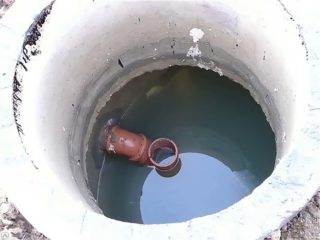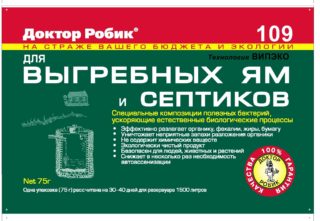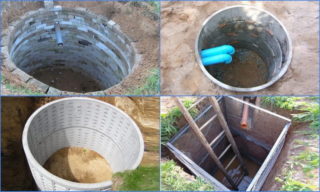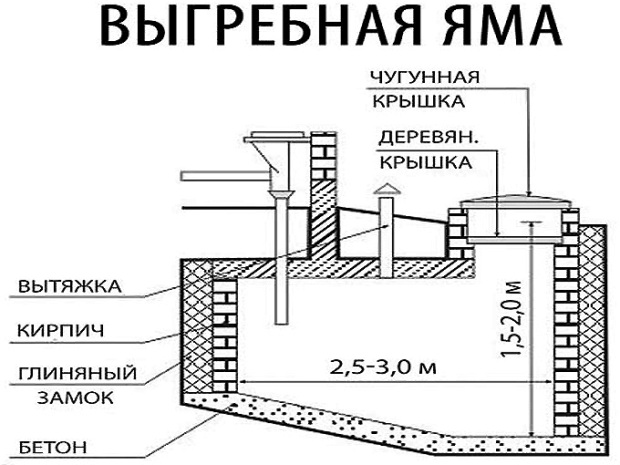A cesspool is usually used to drain wastewater in suburban areas. But owners often have the problem of filling it up quickly. After just a year of use, the owner notices that the water does not leave the pit, even with the regular call of the sewers. There are several ways to solve the problem.
The main causes of the problem
- Silting is the deposition of fecal silt at the bottom. It forms a crust that prevents the liquid from entering the ground.
- Fat bloom - occurs as a result of the discharge of food residues and washing dishes into the sewer system. This film also prevents water from seeping into the soil.
- Freezing of the soil - if the cesspool ceased to perform its functions in frost, most likely the system simply froze over.
- Insufficiently large receiver - it is possible that the amount of wastewater does not correspond to the volume of the cesspool due to an increase in the number
- residents and connecting additional household appliances.
Methods to Remediate Bad Churn
Feces and insoluble fat, getting into the sewer system, settle at the bottom of the storage tank. Gradually, these deposits form a crust that prevents the natural outflow of water. In addition, fatty deposits and a soapy film clog the pores of the soil, which also affects the operation of the system in a bad way. There are several ways to solve the problem.
Mechanical cleaning
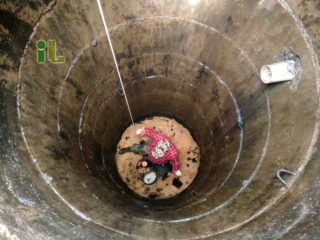
The mechanical method involves performing the following sequence of actions:
- First, you need to call the flushers and pump out the contents of the cesspool.
- The sludge remaining on the bottom and walls is gradually washed away with warm water and scraped off with brushes. To soften organic compounds, you can use biological products.
- After cleaning the surfaces, the pit is filled with water and pumped out again.
- Additionally, the entire pipeline system is flushed. It also accumulates fatty deposits.
- The pit must be dried, after which it can be used again.
Application of bacteria
The use of biological products has the following advantages:
- cleaning the walls of the sewer;
- liquefaction of the solid component of the effluent;
- decomposition of fat;
- restoration of soil porosity;
- elimination of unpleasant odor;
- prevention of sludge formation on the walls and bottom of the storage tank.
Preparations with live microorganisms may differ in their functions, therefore, before use, you should familiarize yourself with the spectrum of action, based on what result you want to get.
Important! To ensure the effective operation of a biological product, you must strictly follow the instructions for use.
Use of chemicals
With a poor outflow of wastewater from the cesspool, chemicals are also used. The main active components here are formaldehydes, nitrate oxidants and ammonium compounds. All of them help to clean the walls of the sewer system from silt and grease.
But there are some nuances that are important to know about before using chemicals:
- Formaldehyde is very harmful to the soil. They make her dead for 7 to 10 years. That is, not a single plant will be able to grow around the waste pit. Experts recommend using formaldehyde-based products less frequently.
- If the main active ingredient is ammonium, then such funds will be effective only at temperatures above zero. However, their advantage is that they eliminate unpleasant odors and dissolve deposits inside the container well.
- The most protective products are considered to be based on nitrate oxidants. The silt dissolved with the help of these substances can be used to fertilize the garden.
Attention! When working with chemicals, you should follow the TB rules, that is, wear a respiratory mask and gloves.
Defrosting a pit in sub-zero temperatures
Usually, when constructing a cesspool, measures are thought out to protect it from the cold: it must be below the freezing point, and a cover insulated with mineral wool or foam must be provided on top. If, for some reason, these conditions have not been met, the pit may freeze. In this case, the following methods of resuscitation will help:
- Hot water is poured into the system through the sewer hole, then the tank is insulated from above.
- The best way is to use a self-heating cable. If the hole is frozen, you can buy a piece of this cable and dip it into the receiver for a while. The cable is automatically disconnected when the set ambient temperature is reached.
What can be done if the volume of the pit is less than necessary
As a result of such alteration, a real septic tank is obtained, which almost does not harm the environment. The level of wastewater treatment in it is about 65-70%.
Prevention to avoid the problem
Everyone knows that it is better to prevent the development of a problem than to waste time and money on fixing it. Observing simple operating rules, you can achieve uninterrupted operation of the system:
- Flush the pit under a strong pressure of water 6-8 times a year.
- Pump out the contents of the receiver once a year.
- Use biological or chemical anti-silting agents regularly.
- Think over and equip good thermal insulation in order to reduce the risk of freezing of the system. To prevent freezing in sub-zero temperatures, pre-install a heat-insulating layer or systematically warm up the tank and pipes.
Grease traps should be installed on all sinks and appliances to prevent siltation of the drain and the formation of a grease film. They will significantly extend the life of the entire system.
The ideal option is to install a septic tank between the house and the drainage pit. With this arrangement of the system, wastewater is purified by 70-95% and goes into the ground without harming the environment.
Compliance with preventive measures and regular use of biological and chemical products will allow the sewer system to work smoothly for many years. In addition, it is recommended to systematically clean the pit from drains.

